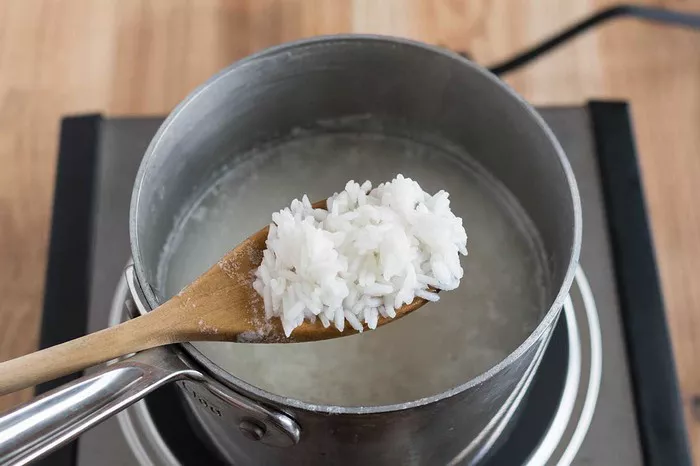Cream cheese is a popular spread used in a variety of dishes, from bagels to cheesecakes. But like many dairy products, it has a shelf life that varies depending on how it is stored and whether it is unopened or opened. Understanding how long unopened cream cheese is good for can help you avoid waste and ensure your food is safe to eat. In this article, we’ll explore the different factors that affect cream cheese’s shelf life, how to tell if it has gone bad, and some general guidelines to help you store it properly.
What is Cream Cheese?
Cream cheese is a soft, fresh cheese made from cream and milk. It has a smooth texture and a mild flavor that makes it versatile for both sweet and savory dishes. The product is sold in various forms, including blocks, spreadable tubs, and whipped varieties. However, regardless of the form, they all share similar ingredients and properties, meaning their shelf life is determined by similar factors.
How Long Does Unopened Cream Cheese Last?
The shelf life of unopened cream cheese can vary depending on several factors, including the product’s packaging, storage conditions, and whether it has been pasteurized. However, in general, unopened cream cheese can last for several weeks to several months past the “use by” or “best before” date on the package. Most unopened cream cheese has a shelf life of about 2 to 3 weeks beyond its printed date.
Here’s a breakdown of how long you can expect unopened cream cheese to last:
Refrigerated Cream Cheese (Unopened): Typically lasts 2 to 3 weeks beyond the “use by” date, as long as it is stored properly.
Frozen Cream Cheese (Unopened): Can last up to 6 months in the freezer, though the texture may change once thawed.
What Affects the Shelf Life of Unopened Cream Cheese?
While unopened cream cheese can last a long time, there are several factors that can affect how long it stays fresh. Below are the main factors that influence the shelf life of cream cheese.
Storage Temperature
Cream cheese is a dairy product, so it should always be stored in the refrigerator to maintain its quality. If the cream cheese is not stored at the proper temperature, it will spoil much faster. Unopened cream cheese should be kept at or below 40°F (4°C) at all times. Storing it in a warm environment, such as at room temperature or near a heat source, can shorten its shelf life and increase the risk of bacterial growth.
Packaging
The way the cream cheese is packaged plays a role in how long it will last. If the cream cheese is tightly sealed in its original packaging, it is more likely to stay fresh for a longer period of time. Air exposure can introduce bacteria that lead to spoilage. Therefore, it’s important to check that the packaging is intact and the product has not been damaged or compromised in any way.
Pasteurization
Most commercial cream cheese is pasteurized, which means it has been heated to kill harmful bacteria. Pasteurized cream cheese has a longer shelf life and is generally safer to consume. If you’re unsure whether your cream cheese is pasteurized, check the label or look for the “pasteurized” label. Non-pasteurized varieties, if they exist, would likely have a shorter shelf life and could be more prone to bacterial contamination.
How Can You Tell If Unopened Cream Cheese Has Gone Bad?
Even when unopened, cream cheese may eventually spoil. There are a few signs to look for when determining if your cream cheese is still safe to eat. These include changes in color, texture, and smell. Here’s what to look for:
1. Check the Expiration Date
Start by looking at the “use by” or “best before” date on the packaging. This is a good starting point, as the manufacturer sets this date to indicate the period during which the cream cheese is at its best quality. However, it’s important to remember that this is not an exact science, and cream cheese may still be good for a short period after the date.
2. Smell
Fresh cream cheese has a mild, slightly tangy smell. If your cream cheese has a sour, rancid, or unpleasant odor, it’s a sign that the product has gone bad. Sour odors usually mean that bacteria or mold is growing inside the product, and it should not be consumed.
3. Appearance
Examine the appearance of the cream cheese. If you see any visible mold growth or unusual discoloration, it’s best to throw the product away. Cream cheese should be white or off-white in color. Any green, blue, or fuzzy growth is a sure sign of spoilage.
4. Texture
Fresh cream cheese should have a smooth, creamy texture. If the texture has changed and the cream cheese is now grainy, curdled, or excessively runny, it may be a sign that it’s starting to spoil. Additionally, if there is a watery layer on top that doesn’t mix back into the cream cheese, this could indicate that it has separated and is no longer fresh.
5. Taste
If the cream cheese passes the visual and smell tests but you are still unsure, you can taste a small amount. Spoiled cream cheese will have a bitter, sour, or off taste. If it tastes odd in any way, it’s best to discard it.
Can You Freeze Unopened Cream Cheese?
Freezing unopened cream cheese is an option, but it’s not the best method for long-term storage if you want to maintain the same creamy texture and consistency. While freezing cream cheese can extend its shelf life for up to 6 months, it can change the texture of the product. Freezing causes the water in the cream cheese to separate, leading to a grainy or watery texture once it’s thawed.
If you plan to freeze unopened cream cheese, make sure it’s tightly sealed in its original packaging. You can also wrap it in a layer of plastic wrap or aluminum foil to prevent freezer burn. To thaw frozen cream cheese, place it in the refrigerator for 24 hours before use. It’s important to note that while the texture may change, the flavor should remain relatively unchanged.
How to Store Cream Cheese for Maximum Freshness
To extend the shelf life of your cream cheese and ensure it stays fresh as long as possible, follow these storage tips:
1. Keep It Refrigerated
Always store unopened cream cheese in the refrigerator. The ideal storage temperature for cream cheese is 40°F (4°C). Avoid leaving cream cheese out at room temperature for long periods of time, as this can cause it to spoil quickly.
2. Check the Packaging
Before storing unopened cream cheese, ensure that the packaging is intact and tightly sealed. If the packaging has been compromised, it can increase the chances of contamination. If you have opened a package, transfer the cream cheese to an airtight container to preserve its freshness.
3. Avoid Freezing If Possible
While you can freeze unopened cream cheese, the texture may change. If possible, only freeze cream cheese if you’re not concerned with texture and you plan to use it in cooking or baking, where texture changes are less noticeable.
4. Store Leftovers Properly
Once you open cream cheese, make sure to reseal it tightly. Place it in an airtight container or wrap it tightly with plastic wrap. Consuming opened cream cheese within a week to 10 days is generally recommended to ensure freshness.
Conclusion
Unopened cream cheese can last for 2 to 3 weeks past its expiration date, provided it has been stored correctly. Always store cream cheese in the refrigerator at 40°F (4°C), and be sure to check for signs of spoilage, such as unpleasant smells, changes in color or texture, or visible mold. Freezing unopened cream cheese is possible, but it can change the texture, so it’s not the ideal method for preserving the product. If you follow these storage tips and guidelines, you can make the most out of your cream cheese and reduce food waste.
By understanding how long unopened cream cheese is good for and how to properly store it, you can enjoy this versatile ingredient safely in your meals and snacks.
Related topics:























